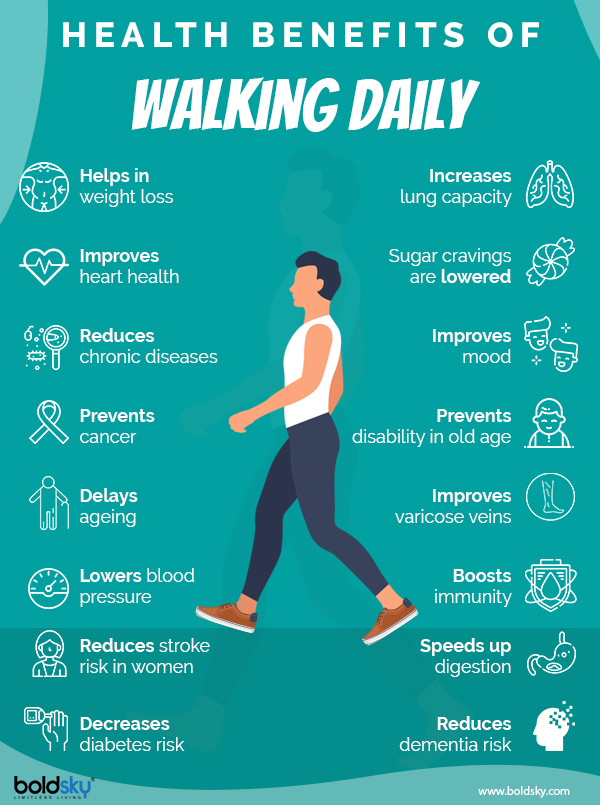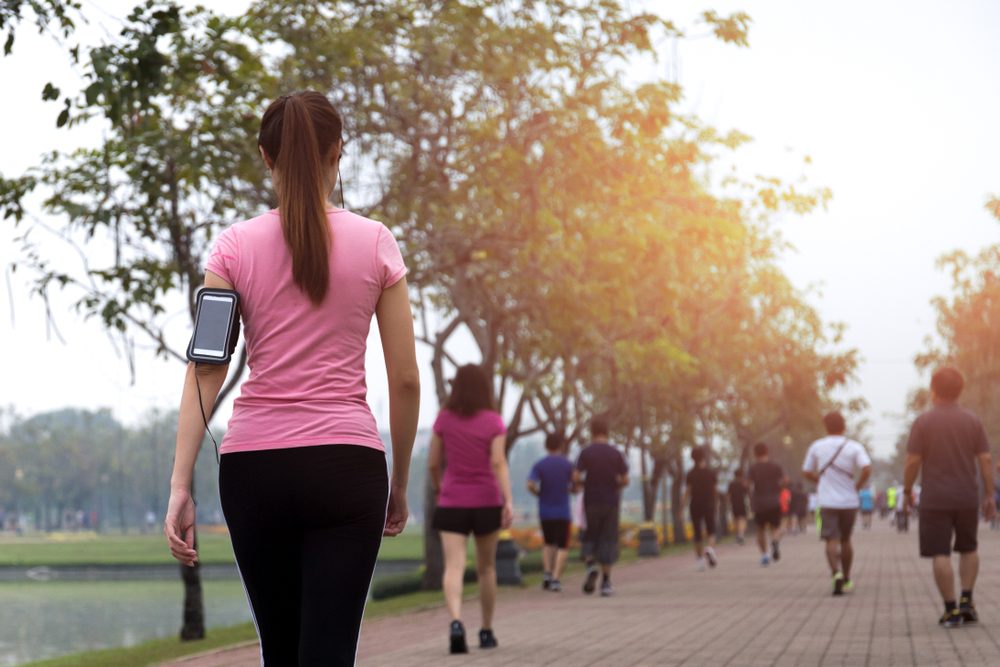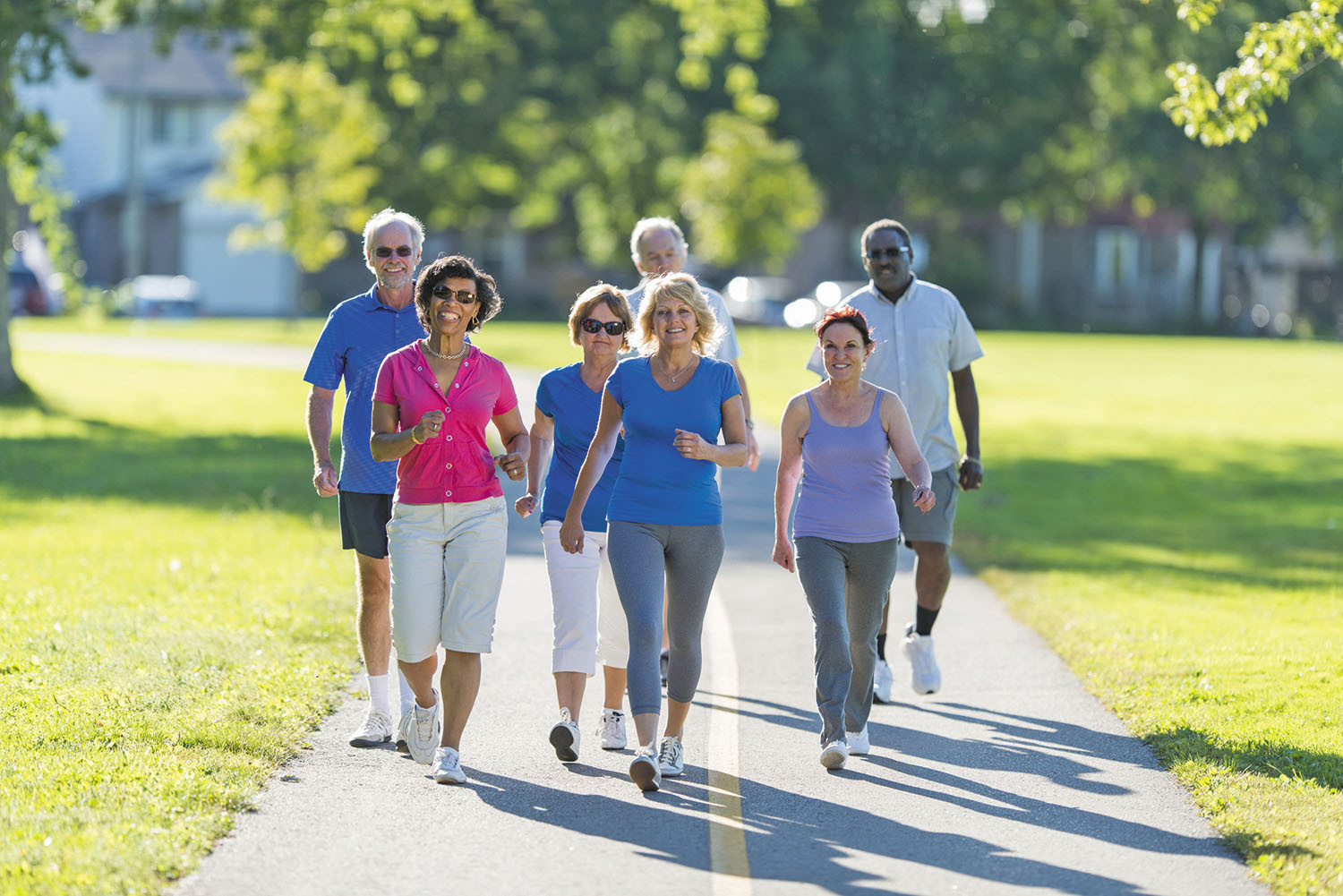Rediscovering Strength and Walking
People often associate fitness with intense exercise. They imagine running fast or cycling vigorously. Cardio seems to be the primary path to good health, appearing as a complete workout solution. However, experts like Andrew Brough highlight an often overlooked aspect. He emphasizes that muscles play a crucial role as well. Focusing on muscle development offers unique and specific benefits.
Terms such as strength training all refer to building muscle mass. This focus not only increases your strength but also enhances mobility and ease of movement. According to Brough, this approach contributes to healthier, longer years. Cardio remains beneficial, undoubtedly raising your heart rate and delivering numerous positive effects for your body.
Dr. Benjamin Snell observes the long-term benefits of regular cardio exercise. It supports heart health by lowering blood pressure and cholesterol levels, making the heart work more efficiently. Dr. Snell notes that the benefits of walking are widely recognized, with many people tracking their daily steps. Cardio’s importance is deeply ingrained in our collective mindset.
But strength training does not receive the same level of attention—though it certainly should, according to Dr. Snell. Often, we neglect the importance of strong muscles. Brough demonstrates how weight training is unique; it not only builds muscle strength but also strengthens bones, which is vital. Additionally, it can improve joint flexibility and it even helps elevate your mood, providing a stronger foundation for overall bodily health. While strength training undeniably offers unique benefits, walking itself delivers surprisingly profound advantages. Often categorized simply as a form of cardio exercise, walking benefits far more than just your heart; it represents a fundamental human movement imbued with significant power—power that nurtures both body and mind in unison.

Walking for Whole-Body Health
Experts have long shared insights into the benefits of simple walking. Even the very first minute of walking enhances blood circulation. However, walking supports numerous aspects of physical health, extending well beyond mere cardiovascular improvements. Engaging in regular walking contributes to effective management of chronic illnesses, helping to prevent the onset of certain long-term conditions, and also serves as an aid in achieving sustainable weight loss.
Moreover, walking plays a critical role in managing the risk of diabetes. A brief 15-minute walk has been shown to stabilize glucose levels, thereby improving diabetes management by preventing sharp spikes in blood sugar following meals. For those aiming to improve their physique, walking for approximately 30 minutes can significantly increase fat burning, a phenomenon explained in detail by expert Dr. Manan Vora.
He explains that your body begins to tap into its fat stores during this period, making it an ideal window for reshaping your body composition. Engaging in 30 minutes of brisk walking significantly aids weight loss. A 2017 study, referenced here, provides evidence that moderate walking enhances the effectiveness of diets aimed at fat reduction, while also improving insulin sensitivity. Thus, walking synergizes with dietary changes to promote greater fat loss.
Walking clearly improves key metabolic health markers, establishing itself as a powerful tool for managing both weight and metabolism. Beyond these benefits, walking supports the health of your bones and joints by increasing joint flexibility and enhancing bone density—a fact observed by Brough. Dr. Vora highlights research indicating that walking may substantially alleviate arthritis-related pain.
Furthermore, committing to walking just five to six miles per week can serve as a preventive measure against arthritis, addressing a widespread health concern. A 2024 study lauded walking for its effectiveness in relieving back pain, with researchers describing it as a low-cost, accessible exercise suitable for nearly anyone, anywhere. The benefits arise from gentle spinal movements combined with the loading and strengthening of back muscles, which contribute to improved spinal health.

Walking for a Better Mood
Relaxation and the release of feel-good chemicals play a significant role in the benefits of walking. This simple activity leads to the accumulation of numerous small improvements over time. Beyond the physical transformations in the body, walking exerts a profound influence on the mind, significantly affecting emotional well-being. The case for walking as a vital component of mental health care is compelling and well-supported.
Dr. Snell presents strong evidence that exercise alleviates depression, noting that this includes activities such as weight training. A major study published in JAMA Psychiatry examined this relationship in depth, reviewing numerous trials on the effects of weight training. The results consistently demonstrated that participants experienced notable mood improvements, with those suffering from low spirits showing significant recovery, while others became less susceptible to depression in the future.
Importantly, the frequency of workouts did not alter the outcome; simply completing the exercise was sufficient to combat depressive symptoms. This principle equally applies to walking as a form of exercise. Walking actively modifies brain function, elevating mood and reducing stress levels. According to Dr. Dante Durand, engaging in brisk walking for just two hours per week yields these mental health benefits.
Mood receives a rapid boost as walking initiates the release of dopamine and other feel-good brain chemicals. Consequently, symptoms of stress, depression, and anxiety are alleviated. Dr. Vora elaborated on the timeline of these effects during a walk: within five minutes, mood noticeably improves as endorphins begin to circulate. After ten minutes, cortisol—the hormone associated with stress—diminishes in its influence. Extending the walk to forty-five minutes allows the mind to quiet down, promoting a sense of calm and mental clarity. Completing a full hour results in a significant surge in dopamine, effectively rewarding the brain, as Dr. Vora explains. These scientific findings align perfectly with personal anecdotes.
One individual shared how starting their day with a walk, especially in the early morning, became something they eagerly anticipated. Rather than relying on coffee to combat fatigue, some days they would leap out of bed quickly, feeling invigorated when the sun was shining—almost as if springing into action. This personal experience echoes expert research on mood enhancement and stress reduction, highlighting walking’s uniquely accessible and impactful nature.

The Power of Simple Walking
Unlike many other forms of exercise that require specialized gear or a trip to the gym, walking comes with absolutely no financial cost and can be done virtually anywhere you choose. Dr. Durand highlights that experts unanimously agree walking is accessible and beneficial for everyone, emphasizing that you don’t need any money to accumulate your daily steps. Its low barrier to entry makes walking an exceptionally inclusive activity, and its simplicity is precisely what lends it such transformative power for so many individuals.
No special skills or prior training are necessary; all it takes is moving one foot in front of the other. This accessibility is particularly crucial given the current mental health crisis facing the nation. Walking offers a widespread, practical means to address this pressing issue. The statistics are alarming: one in five adults experiences mental illness annually, and one in six young people aged 6 to 17 are similarly affected. In regions like South Florida, where the demand for mental health support continues to escalate, access to care remains insufficient, and in some areas, virtually nonexistent. In such contexts, the simplicity and affordability of walking become indispensable, providing a straightforward tool to help individuals cope with mental health challenges.
Walking is not only a reactive measure but also a proactive one, helping to prevent mental health problems before they develop. It can be started independently without the need for medical consultation, offering immediate relief by reducing stress and alleviating feelings of sadness. The mood-enhancing benefits of movement extend beyond the individual to bolster mental health at the community level, complementing formal healthcare systems. Considering all the positive impacts walking has on physical and mental well-being, its value becomes undeniably clear.
Walking is more than simply accumulating steps or engaging in basic cardio; it represents a comprehensive activity that benefits your entire being. Through walking, your body grows stronger, your mind attains a sense of calm and tranquility, and your spirit experiences upliftment. Its positive effects manifest continuously, minute by minute, contributing to the prevention of long-term illnesses. When we examine walking in this light, it reveals only a fraction of its true potential—it is far more than a mere physical action.
Walking simultaneously cultivates a mental state that accompanies the movement itself, creating a harmonious interplay between body and mind. This dynamic connection opens pathways to enhanced overall health and well-being.By moving beyond the basic physical advantages walking provides, one can uncover how this simple act intricately links mental focus with physical motion. In truth, walking harnesses the potential for holistic wellness, transcending the repetitive act of placing one foot before the other. It anchors you in the present moment, often serving as a valuable tool for mindfulness. The rhythmic nature of walking can be used intentionally to cultivate inner peace and mental clarity with ease, thereby introducing the concept of walking meditation. Transforming a seemingly ordinary activity into a form of mental exercise offers a profoundly beneficial practice.

Meditation You Can Walk With
Walking meditation combines the physical act of walking with meditative practices in a dynamic way, inviting you to step off the autopilot of busy daily routines and become more aware of your surroundings, your body, and your thoughts. This form of active meditation is often less intimidating than traditional seated meditation for some individuals. Dr. Dragonette notes that mindful walking offers an easy entry point for beginners, helping them incorporate meditation into their everyday lives.
The beauty of walking meditation lies in its ability to unify body and mind. Rather than allowing your thoughts to race ahead toward emails or to-do lists, mindfulness encourages a gentle return to the present moment. As you walk, becoming aware of the sensation of your feet meeting the earth transforms each step into both the journey and the destination. Mattingly explains that noticing these simple, repetitive acts anchors the mind, drawing it back to the present instead of drifting toward the future or dwelling on the past.
By combining exercise with meditation, walking meditation creates a powerful synergy that enhances mental health and overall well-being. The benefits of regular exercise and mindfulness are well documented, including reductions in stress and support for managing anxiety and depression. Dr. Dragonette emphasizes that practicing mindful walking regularly helps individuals connect deeply with their bodies and surroundings in an effortless way, fostering greater happiness and health through this simple practice.
Ready to try mindful walking? It may be easier than you think. A straightforward guide can help you transition from a regular walk into a meditative experience. The key lies in moving with intention and gentle awareness—doing so without judgment, simply observing each moment as it unfolds.

How to Practice Mindful Walking
Step one involves bringing attention to the physical sensations of walking. Feel the natural process of your foot rolling from heel to toe with ease. Notice the subtle lift and movement as your foot travels through space, and the final gentle touch-down on the ground. Pay close attention to these sensations and movements that you often overlook, such as the effortless swing of your arms or the varying pressure as your feet make contact with the ground—whether firm or soft. This initial focus helps to ground you firmly in your physical reality.
Next, engage all five senses to deepen your awareness of the environment around you. Begin with sound by listening attentively and closely. Mattingly advises observing sounds in a non-judgmental way, simply noting their presence without labeling them as good or bad, loud or pleasant. Gradually expand your sensory awareness to include sight, smell, and touch, noticing the textures beneath your hands or feet. Dr. Dragonette adds that details such as the weather or the calls of birds serve as excellent starting points to enhance sensory engagement, making the experience more enjoyable and immersive.
Step three involves performing a mindful body scan. Following Mattingly’s guidance, conduct a judgment-free check-in with your physical body. How does your body feel in this moment—tired, restless, energized, or perhaps a combination of sensations? Allow whatever arises to be present without resistance or analysis. Mentally scan upward from your feet, observing sensations such as tingling, coolness, or warmth. Notice how these feelings might shift or change. The aim is to cultivate curiosity rather than evaluation or judgment, gently inviting softness into areas of tension with each breath.
The fourth step encourages an emotional check-in. Mattingly suggests asking yourself what mood or emotional state is present right now. It might be anger, frustration, joy, or a complex mixture of feelings. Allow yourself to experience whatever emotions arise in a non-judgmental way, recognizing that there is no right or wrong way to feel. This acceptance is a crucial component of mindfulness practice and often serves as a transformative part of the experience.
Step five brings attention to your breathing. Even while moving, consciously engage in mindful breathing practice. Dr. Dragonette notes that slow, deliberate breathing effectively calms the nervous system and contributes significantly to overall well-being and a sense of ease. Focusing on your breath provides a simple yet powerful way to return to the present moment and reconnect your body with the act of walking. Observe whether your breath is quick or slow, how it feels to fill and empty your lungs, and the sensation of each inhale and exhale. During a relaxing walk, try counting your breaths gently to maintain this mindful focus with ease.
Step six addresses the natural wandering of your thoughts. It is perfectly normal for the mind to drift during meditation sessions, and walking meditation is no exception. Dr. Dragonette advises noticing when thoughts begin to take over, and with a gentle smile, letting them go without resistance. Taking the next step serves as a gentle cue to redirect your attention back to the rhythm of your walk. This consistent practice of refocusing strengthens the “mindfulness muscle,” making it easier over time to remain present.

Transform Your Walk
As you become more comfortable with these foundational steps, adapting your mindful walk with specific prompts can deepen the experience in a way that feels meaningful to you. Options such as nature walks, gratitude walks, or energizing “pump-up” walks offer different lenses through which to engage mindfulness in movement. These variations transform a regular walk into a personal, private practice that can become a deeply uplifting and transformative journey.
Nature walks, in particular, promote overall health and well-being, nurturing both the mind and body. Observing natural elements along familiar routes refreshes your perspective and provides grounding that feels rejuvenating. Connecting with trees or other aspects of nature can evoke a profound sense of being part of something larger than oneself. One individual shared how feeling connected to the trees by the lakefront helped put their stress into perspective, making it easier to release. Pausing to smell flowers, touch the bark of a tree, or examine pebbles along the path can transform an ordinary walk into a mini-vacation for the mind, shifting one’s mental state and leading to feelings of refreshment and the inspiration of new ideas.
The gratitude walk harnesses the powerful effect of thankfulness. Research demonstrates that practicing gratitude not only elevates mood but also helps combat stress, improves sleep quality, and brings various physical health benefits. One client reported feeling a newfound calm within their family, especially with their children, and noted a happier relationship with their spouse as a result of regularly engaging in this practice. They made it a habit to list five things they were grateful for each day—often related to their children, spouse, work, or daily experiences. This mental exercise, combined with the physical movement of walking, fosters a positive mindset and makes it easier to recognize and appreciate gratitude once returning home. Using the walk as dedicated time to consciously list things gratefully can surprisingly shift one’s overall outlook and mindset.
For those seeking an energy boost, the “pump-me-up” walk offers a confidence-enhancing session. It begins by playing a favorite empowering song that resonates deeply with you. While walking, engage in positive self-talk from an outside perspective, affirming what you need to hear to feel confident and strong. Simple affirmations like “You’re a rockstar” or “You nailed that presentation” carry immense power when spoken aloud. Combining motivating music with empowering self-talk during movement leaves you feeling energized, confident, and ready to take on challenges.

Rainy Walks and Community Connection
Beyond these mindful walking practices, walking itself presents numerous benefits that arise from embracing a variety of conditions and environments. For example, walking in the rain feels different and might initially seem strange or uncomfortable to step out into a gentle drizzle. However, rainy walks offer surprising advantages. Keen explains that rain helps wash away pollutants and allergens from the air, leading to better air quality—particularly at the start of a shower. Water droplets easily absorb airborne particles, effectively cleansing the air you breathe during your walk and contributing to a healthier respiratory experience.
Walking in the rain aids the body’s temperature regulation by preventing overheating during exercise in warm weather, as the cooler temperatures and raindrops act as natural coolants. Keen further explains that overcast skies accompanying rain reduce the intensity of direct sunlight, which contributes significantly to a more comfortable walking experience. This combination helps ensure that walking in the rain feels more pleasant and less taxing on the body.
There is also a possibility that you may burn more calories during walks in inclement weather. Ascher notes that people tend to walk faster in the rain, likely in an effort to avoid getting wet, which in turn causes the body to work harder. Additionally, Keen highlights that cooler temperatures require the body to expend extra energy to maintain core temperature, making thermoregulation slightly more challenging. Consequently, this leads to a modest increase in calorie expenditure compared to walking in milder, more typical weather conditions.
In addition to these physical effects, the sensory experience of rain—its sounds and smells—has a naturally calming influence. Ascher mentions the “petrichor” phenomenon, where the distinct scent of rain triggers pleasant memories and emotions, thereby boosting mood and promoting relaxation. This sensory engagement helps reduce overall stress levels and enhances well-being. Embracing the experience of a rainy walk offers a unique opportunity to soothe the mind and foster a sense of calm that can feel particularly restorative at times.
However, embracing outdoor elements while prioritizing safety and comfort is crucial, as not all rainy conditions are suitable for walking. Patel advises caution for individuals with a history of balance issues or difficulties navigating unsteady surfaces, as these conditions increase the risk of injury. It is equally important to avoid walking during severe weather events such as storms, lightning, strong winds, or flash flooding. Checking the weather forecast for potential hazards before heading out is a vital precaution, with Keen recommending that this simple step becomes routine to ensure safety.
To make rainy walks both comfortable and safe, several key precautions can enhance the experience. Wearing shoes with good grip, preferably waterproof, helps prevent slips and blisters while providing essential support. A rain jacket is indispensable for staying dry and protected from wind, which helps maintain a stable body temperature throughout the walk. For visibility during low-light conditions, wearing a reflective vest or using flashing lights attached to a backpack or jacket ensures that others can see you clearly. Packing an extra pair of socks is wise since wet socks can cause discomfort and increase the likelihood of blisters. When planning your route, it is advisable to avoid areas with trees or power lines due to the risk of falling branches during heavy rain or wind.
Walking offers more than just physical benefits when done in isolation; it becomes even more enriching when shared with others. Joining walking groups or walking with friends adds layers of motivation and accountability, which can make it easier to maintain a consistent routine and develop a lasting habit. Dr. Durand emphasizes the significant social benefits of walking with others, noting that it effectively combats feelings of loneliness and isolation.
This social dimension is particularly relevant in the context of the ongoing mental health crisis. Murthy has identified a strong correlation between loneliness and negative health outcomes, highlighting the value of community walks where access to care is limited. For example, the NAMI chapter organizes walkathon fundraisers that not only raise awareness but also introduce valuable resources while fostering a sense of community connection. Thousands of participants demonstrate the power of walking together as a simple yet profound way to build support networks. Additionally, programs designed to engage older adults at risk of loneliness offer guided walks as a vehicle for strengthening community ties and addressing social isolation.

Making walking a lasting habit is a crucial piece of the puzzle for achieving long-term health and well-being. The American Heart Association recommends regular weekly physical activity, and incorporating daily brisk walks is an effective way to meet these guidelines, as Dr. Durand highlights. It is important to start with manageable steps, gradually building up both pace and duration over time, since consistency proves far more valuable than intensity at the beginning of any exercise routine. Consulting a doctor before starting a new exercise regimen is always advisable. Walking offers an accessible and straightforward path to not only improve physical health but also to foster a meaningful connection between mind and body, ultimately helping individuals discover and maintain a healthier lifestyle.
Related posts:
Strength training is key to physical and mental health
New vision for mental health in Wales paves the way for same-day support
How much walking can boost your brain? See what movement triggers





